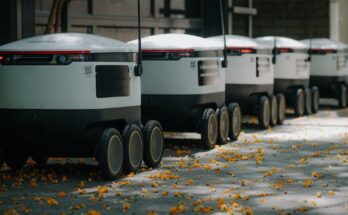Hey there! Ever feel like you’re swimming in numbers, emails, posts, and just… stuff? In today’s world, we’re creating and collecting more information than ever before. Think about it: every time you scroll, click, or buy something online, that’s data! Businesses are drowning in this stuff, trying to figure out what it all means. They need to know what customers like, what’s selling, what’s not, and what might happen next. That’s where data analytics swoops in. It’s like having a superpower that helps you make sense of all that chaos. By the end of this article, you’ll get a handle on some super useful techniques that turn messy data into smart decisions. Ready to dive in?
Getting Your Data Shipshape: Cleaning Up the Mess
Okay, imagine you have a huge box full of LEGOs. But some pieces are broken, some are mixed with puzzle pieces, and some are just plain missing. You can’t really build anything cool until you sort all that out, right? That’s exactly what data cleaning is all about. Real-world data is rarely perfect. It’s messy! You might have typos (like ‘Califoria’ instead of ‘California’), missing information (someone forgot to fill in their age), or stuff that just doesn’t make sense (like a person being 200 years old). Before you can even start analyzing, you gotta clean it up.
Think about a store trying to understand its customers. They have names, addresses, purchase history, maybe even birthdays. If some addresses have typos, they can’t send mail. If some purchase amounts are listed as negative numbers (unless it’s a return, but even then!), that throws off total sales calculations. Data cleaning involves fixing these errors, deciding what to do with missing pieces (maybe fill them in with an average, or just note that they’re missing), and making sure everything is in a consistent format. It’s maybe not the most exciting part, but trust me, it’s totally essential. Trying to analyze dirty data is like trying to build that LEGO castle with missing and broken bricks – it just won’t work right.
Just Looking Around: Descriptive Analytics
Alright, once your data is squeaky clean, the first thing you usually want to do is just get a feel for it. This is called descriptive analytics. It’s like taking a look at your cleaned-up LEGO collection and saying, “Okay, how many red bricks do I have? What’s the most common color? What’s the average number of studs on these plates?” You’re just describing what’s there, right now or in the past.
For businesses, this means looking at things like total sales last month, the average age of customers who bought a specific product, or which website pages got the most visits yesterday. It’s about summarizing the data you’ve got to understand the basic facts and figures. You’re not trying to predict the future or find complicated relationships yet. You’re just getting a clear picture of what happened. Think of it as creating summaries, calculating averages, percentages, and counts. It gives you a baseline understanding – “This is what our data looks like.”
Connecting the Dots: Correlation and Regression
After you know the basics, you might start wondering, “Hey, are these two things related?” That’s where correlation comes in. It helps you see if two things tend to change together. For example, does ice cream sales tend to go up when the temperature goes up? If they do, they’re correlated. Correlation just tells you if there’s a relationship and how strong it is (and whether they go up together or one goes up while the other goes down), but it doesn’t say *why* they’re related. Just because more ice cream sells when it’s hot doesn’t mean the ice cream *causes* the heat!
Regression takes this a step further. It tries to model the relationship and see if you can use one thing to *predict* the value of another. So, based on past data, if the temperature goes up by one degree, how much more ice cream can we *expect* to sell? Regression helps draw a line through the data points to show the general trend and can be used for simple predictions or understanding the impact of one factor on another. Imagine trying to figure out if spending more time practicing a video game *usually* leads to a higher score. Regression could help model that relationship.
Guessing the Future: Predictive Analytics
This is where things get really interesting! Predictive analytics uses past data and findings from descriptive and correlation/regression analysis to try and figure out what might happen next. It’s not a crystal ball, but it’s the next best thing based on patterns. Companies use this all the time.
Think about Netflix suggesting movies you might like, or an online store recommending products based on what you’ve bought before. That’s predictive analytics at work! They’re analyzing your past behavior and the behavior of people similar to you to predict what you might want in the future. Or consider a weather forecast – that’s predictive analysis using tons of historical weather data to guess if it’ll rain tomorrow. It uses statistical models and algorithms to make educated guesses about future trends or outcomes. It’s about moving from “What happened?” to “What *could* happen?”
Sorting into Groups: Clustering and Classification
Sometimes, you have a bunch of data points, and you want to group similar ones together without knowing beforehand what those groups should be. That’s clustering. Imagine you have data on all the different kinds of fruit people buy. Clustering could help you discover natural groupings, like maybe people who buy lots of berries also buy yogurt, while people who buy lots of apples also buy peanut butter. You didn’t tell the analysis what groups to look for; it found them on its own based on similarity.
Classification, on the other hand, is when you *already know* the categories you want to put things into, and you use data to train a model to sort new things correctly. A classic example is email spam filters. You train the filter by showing it lots of emails you marked as “spam” and “not spam.” Then, when a new email comes in, the model looks at its features (like certain words or who sent it) and classifies it as either spam or not spam. It’s about putting data into predefined buckets based on what you’ve learned from examples.
Making Sense with Pictures: Data Visualization
Looking at rows and rows of numbers can make your eyes glaze over pretty fast. That’s why data visualization is super important! It’s all about turning that data into charts, graphs, maps, and other pictures that make it easy for your brain to understand what’s going on, fast. A well-made graph can show a trend or a pattern much more clearly than a giant spreadsheet.
Think about seeing a line graph showing your favorite sports team’s score over the season – it’s way easier to spot winning or losing streaks than reading game-by-game results in a list. Or a pie chart showing how different products contribute to total sales. Visualization helps communicate the insights you found using the other techniques. It makes data stories easy to see and share, helping people grasp complex information quickly and make decisions based on what they see.
So, there you have it! We’ve taken a peek at some of the most common and helpful data analytics techniques out there. We talked about starting by cleaning up that messy data, then just getting a basic understanding of it using descriptive methods. After that, we looked at how to find connections between different pieces of data with correlation and regression, and even tried to peek into the future using predictive analytics. We also covered sorting things into groups with clustering and classification, and finally, the power of turning all those numbers into easy-to-understand pictures with data visualization. These techniques are like different tools in a toolbox, each one helping you chip away at raw data to find the valuable insights hidden inside. Mastering even a few of these can totally change the way you see information and help you make way smarter choices, whether you’re running a big company or just trying to figure out the best time to leave for school based on traffic data.




